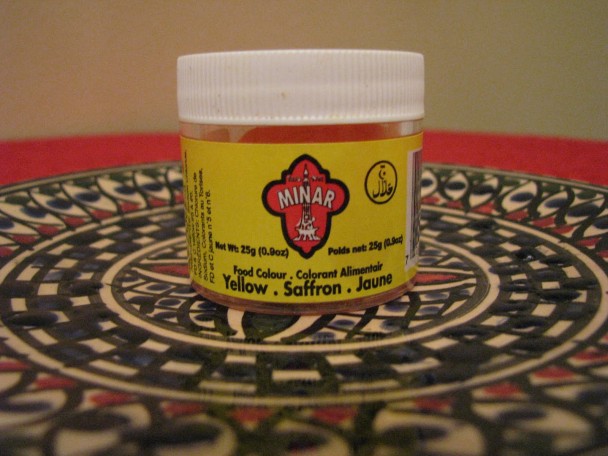
Traditional spices I bought from a Tafraoute marketplace; they include ginger, cumin, paprika, cinnamon and tumeric.
Okay, so finally, I am posting a recipe that is NOT a quick one. It’s definitely not difficult and the end taste and nutrition it brings is well worth it. I have to give my “brothers” in Tafraoute, Morocco credit for the inspiration and tutelage on this tajine recipe. Said (pronounced “sigh-ed”) and Mostafa, chefs and now owners of the Argana Hotel in Tafraoute cooked THE most amazing meals I had tasted during my two month stay there. In two months, you can imagine all the Moroccan food I ate, but nothing….nothing compared to the freshness and quality of their meals. I feel lucky to have been able to witness their magic in the kitchen…and they were so generous to invite me to each and every meal. So now I must pass some of their knowledge on to those who aren’t able to travel so far.
Tajine is a traditional Moroccan dish cooked in an earthen cone-shaped dish that sits directly on the fire (so if you have an electric stove and a tajine dish….um…not a good idea). You can use a slow cooker if you don’t have a tajine. There are many variations to this dish; some flavors include chicken and apricot, chicken lemon and olives, meatballs (also known as kefta) and egg, fish and vegetarian (which can be done with this recipe..just replace the chicken).. The variations are endless. The one I am posting here uses the ingredients that I witnessed from an authentic Moroccan kitchen from Tafraoute…although one of the cooks is from the Sahara.
Ingredients for 8 Servings:
2-3 Tablespoons of Olive Oil
8 Chicken thighs (you can make it with or without the bones…I bought boneless)
Half garlic – diced
2 Large Onions – thinly sliced
4 Large carrots – I chopped mine like my friends did, in long, blocks
2 Green Peppers – Chopped in long strips
2 Zucchinis – cut similarly to the carrots
1 Tomato – sliced
4 Small Potatoes – cut in fourths
2-3 Chili Pepper – small ones can be left whole. The guys would throw 2-3 whole ones in the tajine and surprisingly, it wouldn’t be spicy.
5-6 Green olives
1-2 Slices of lemon (depending how much flavor you want…I added too many (see photo)
1 1/2 Teaspoons ground cumin
1 1/2 Teaspoons ginger
1 Teaspoon cinnamon
3/4 Teaspoon ground black pepper
First heat the olive oil on a skillet over medium-high heat (or if you own a tajine, then just use that…).
Add the diced garlic to the heated oil; cooking it for a minute and then add the chicken for an introductory heating.
Brown the chicken lightly on both side (you should probably turn the heat down to medium or less than…you don’t want to completely cook the chicken. I’d say a couple minutes is good).
Push the chicken aside and add the onions, sautéing them a little and then placing them at the very bottom. Put the chicken on top of the onions.
Place these three ingredients on the bottom of the slow cooker or tajine, then add the other vegetables (carrots, zuchini, potatoes, olives, and I even saved more onions to add on top) in layers. When I watched the guys, they did it in a circular design such as this:

Okay, so not really the neatest example of a circular design; my friends are definitely more meticulous but you get it. :)
Next, throw in all the spices. Just throw them…go wild! Forget meticulous. There is one ingredient that I didn’t use that the guys always used which was a food coloring (you can buy it at Middle Eastern stores…I managed to find it in a market in Las Vegas but didn’t buy it). But if you want to be truly Moroccan, you should add it in. This is what one kind looks like:
This needs to cook for at least a few hours.

Browning the chicken and cooking it with onions and some garlic; I actually put spice on it beforehand and if you want, you can marinate it overnight.

Adding the lemon; don’t add three unless you want it to dominate the flavor. I made this mistake. I would have used about one.
After cooking it on low heat for several hours, it’s done! Enjoy it and to be truly authentic, eat with your hands. The locals use bread as a spoon and a tool to soak up the gravy at the same time. Delicious!


